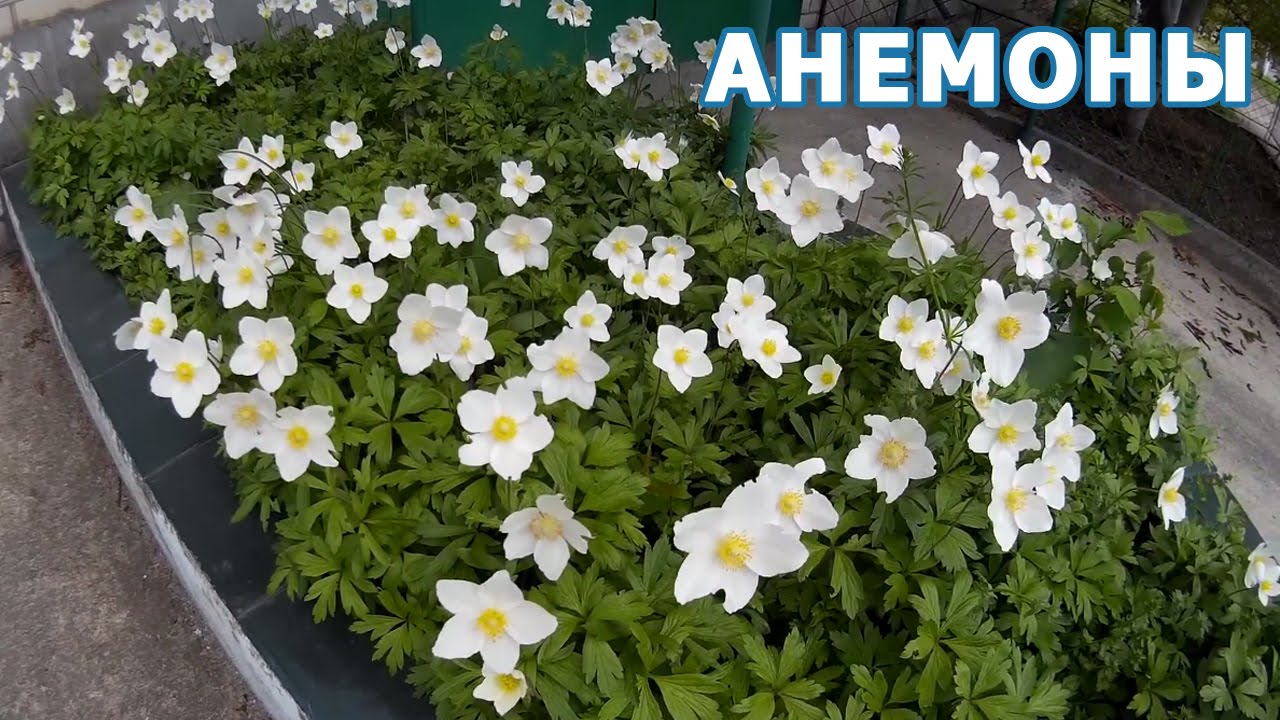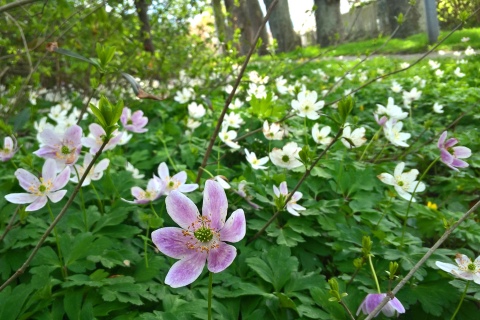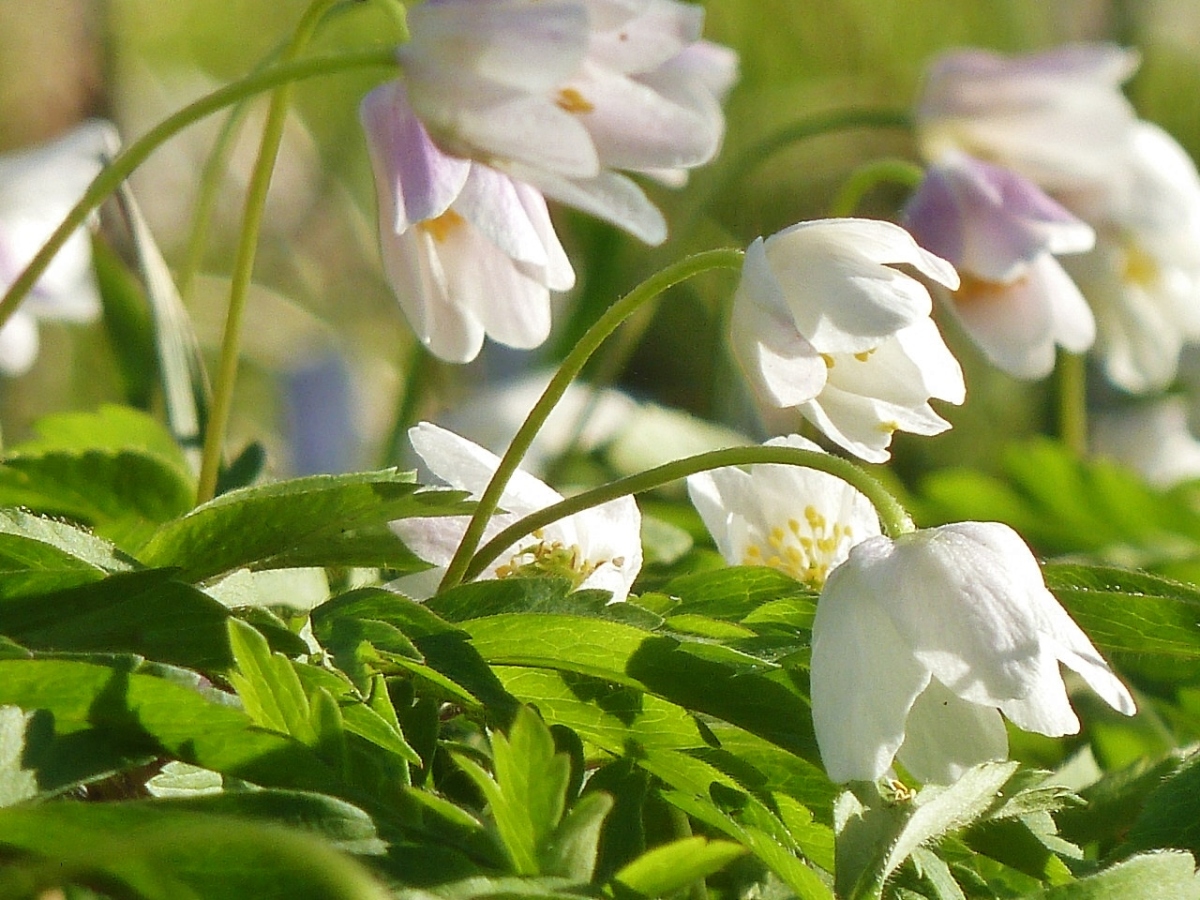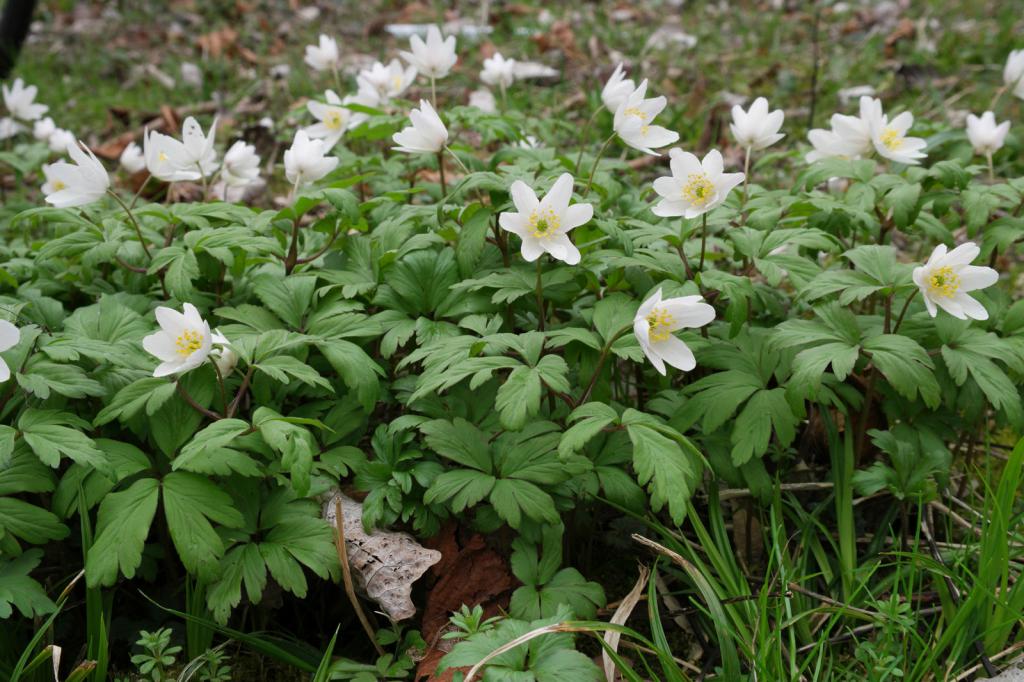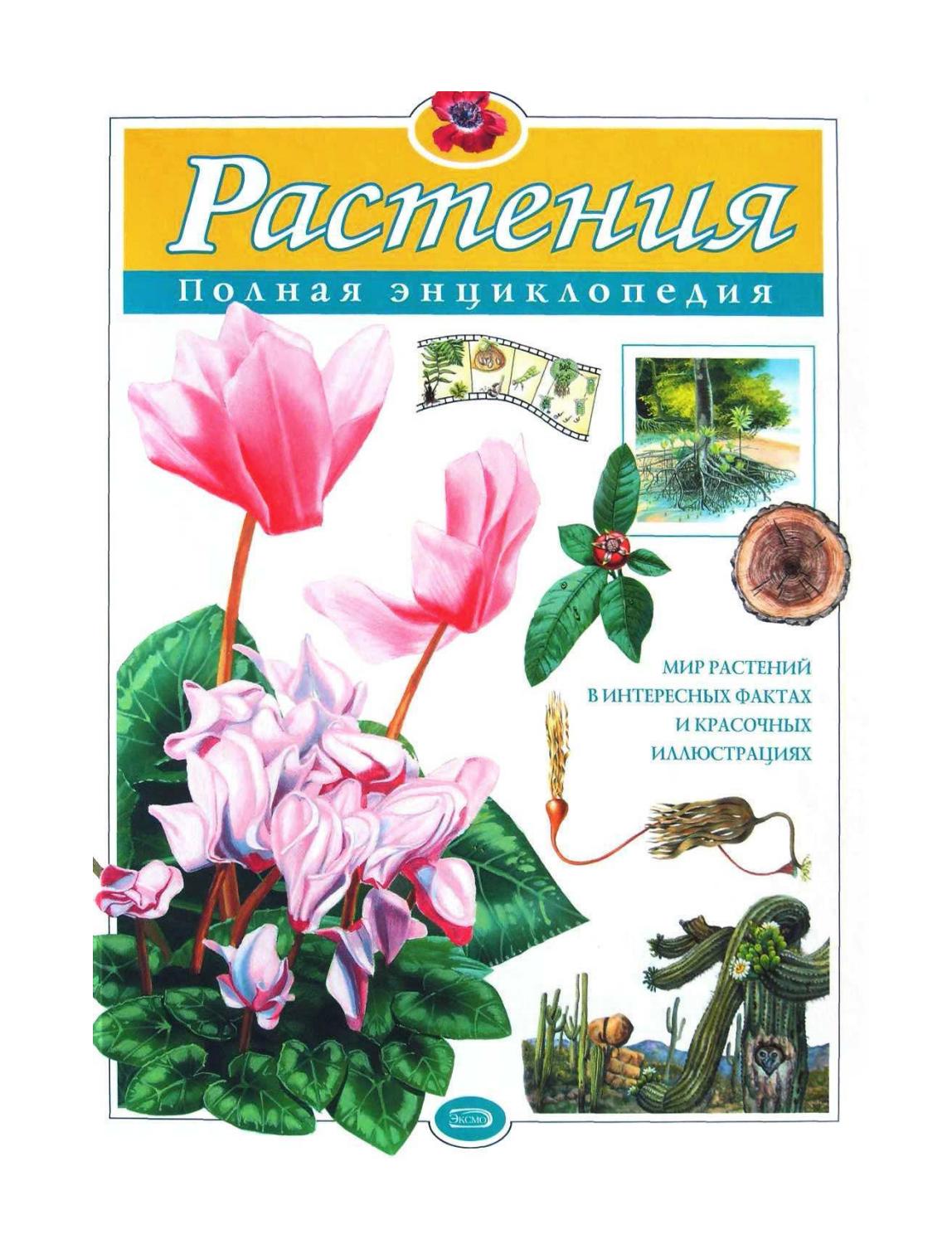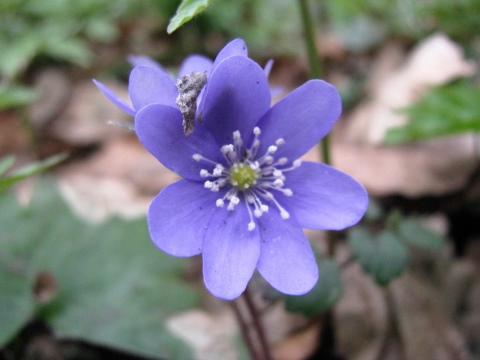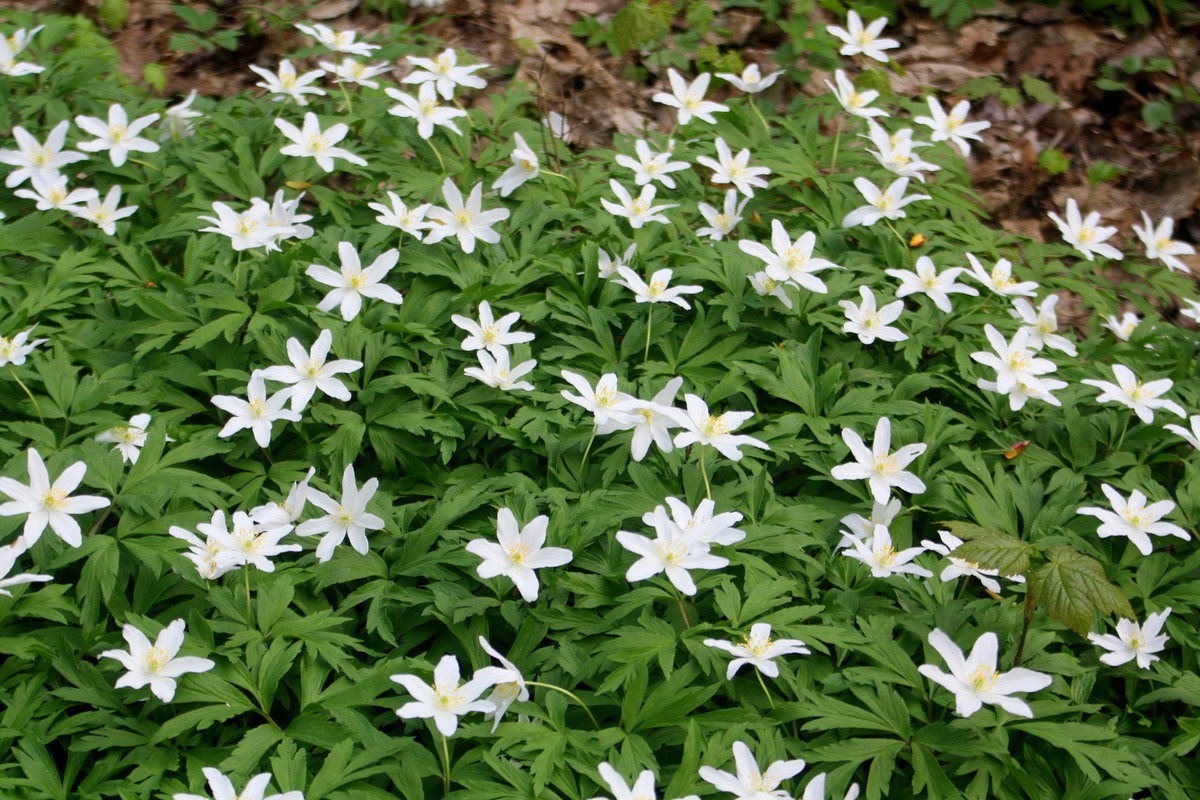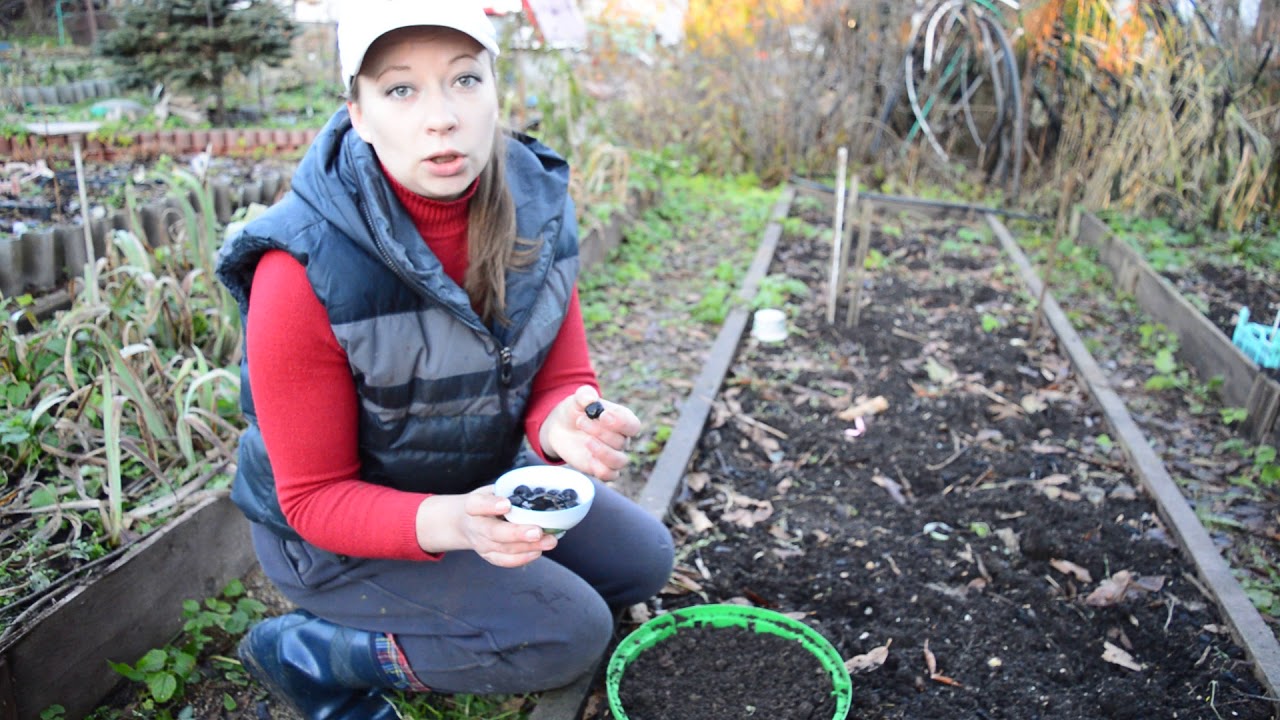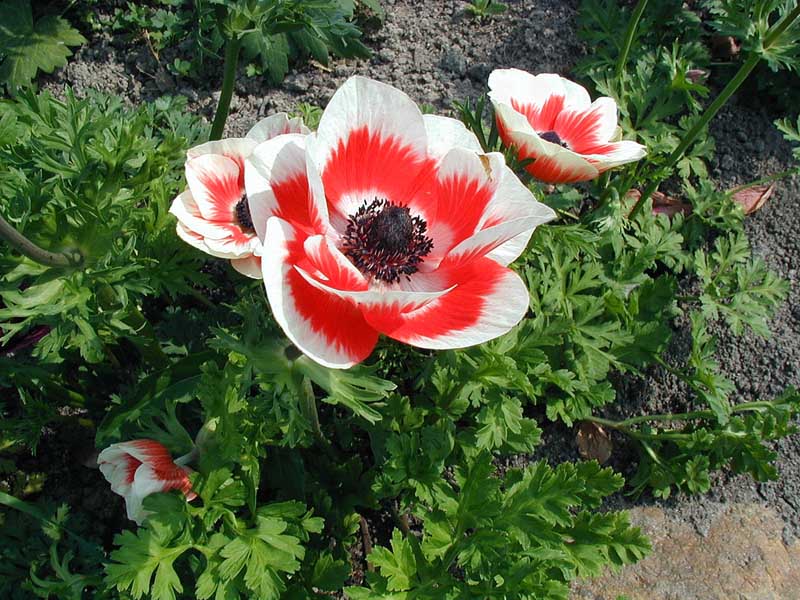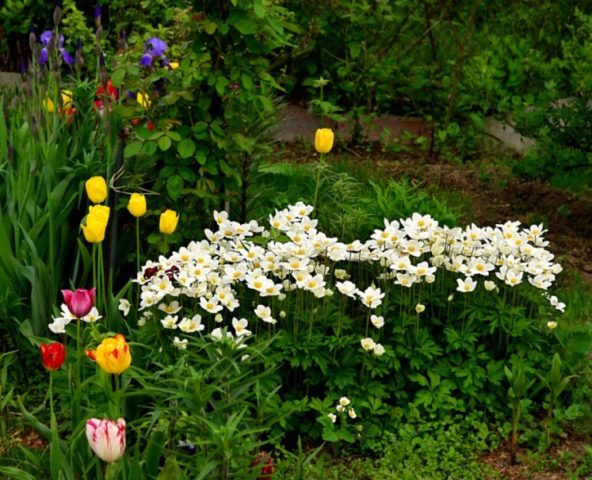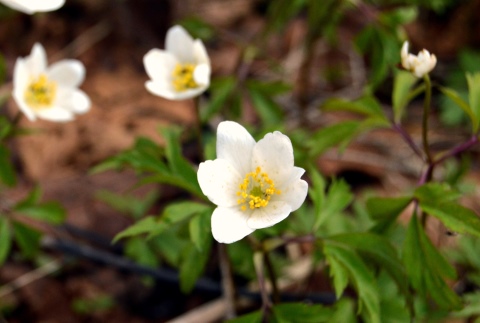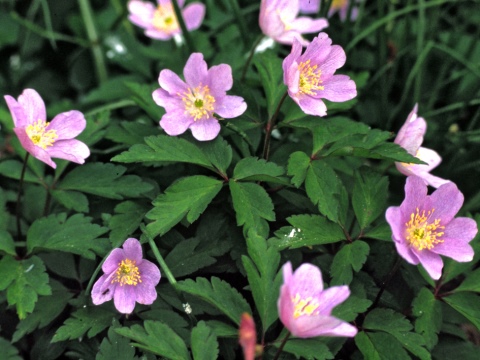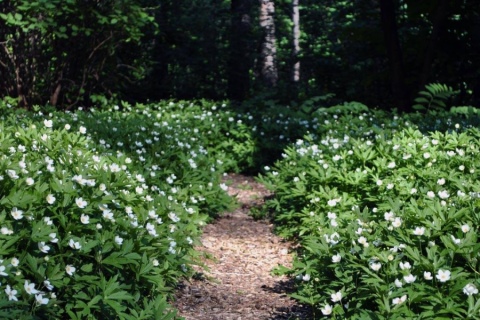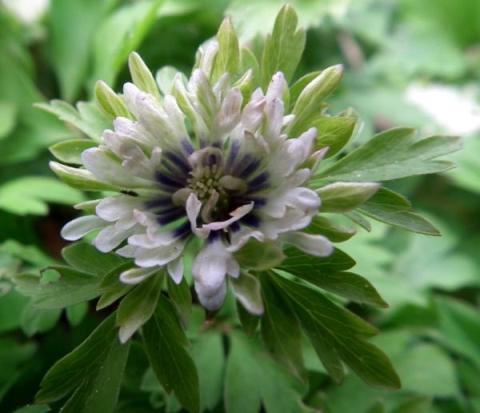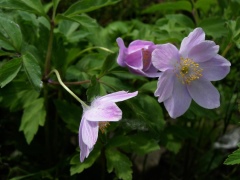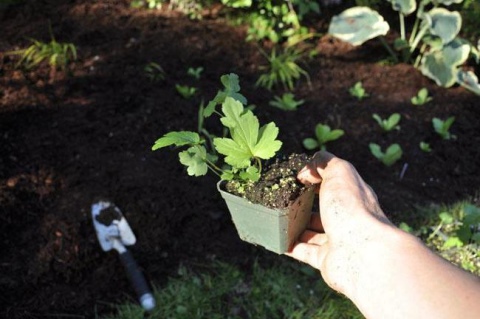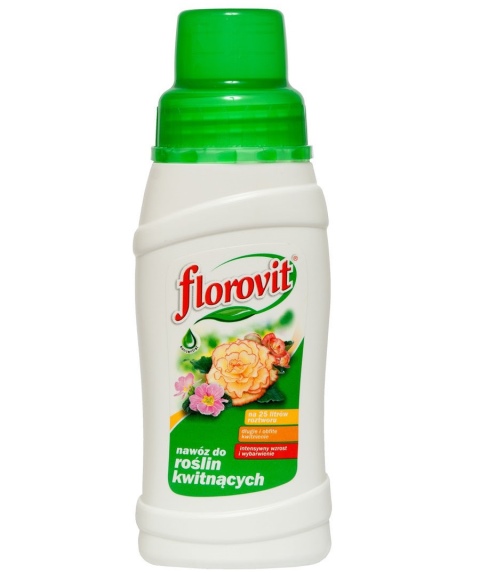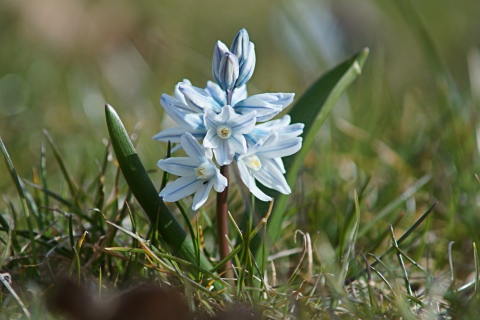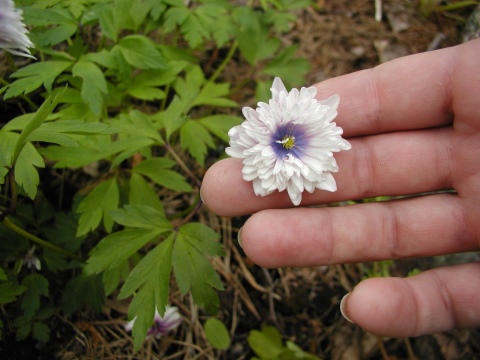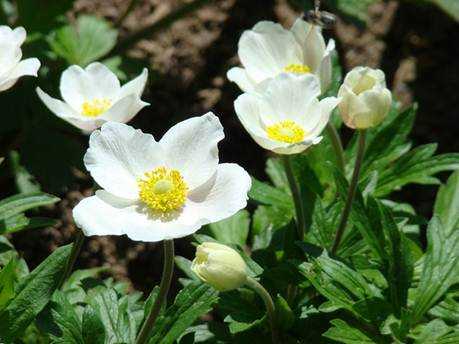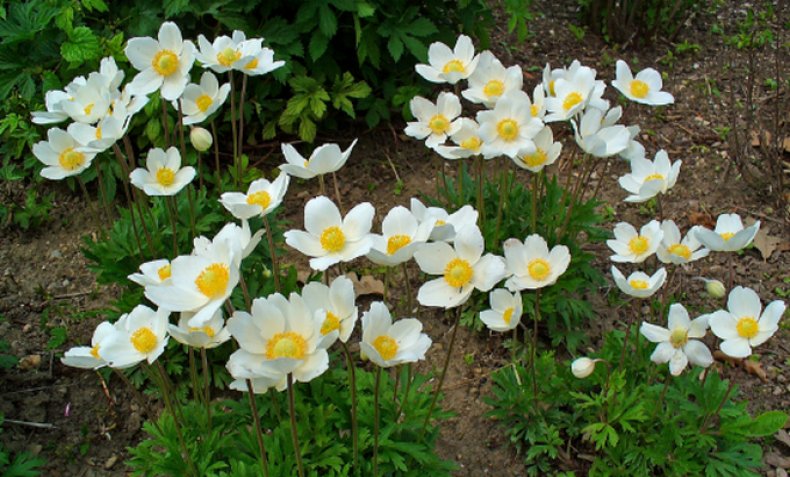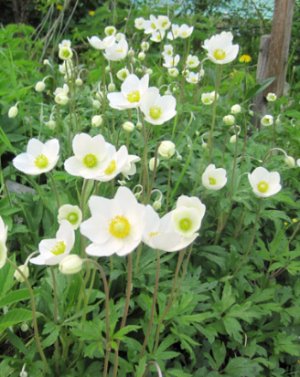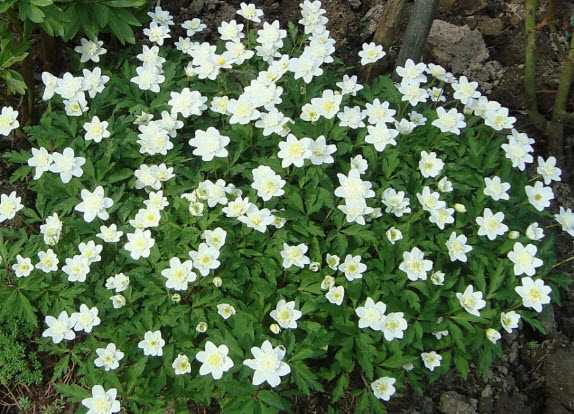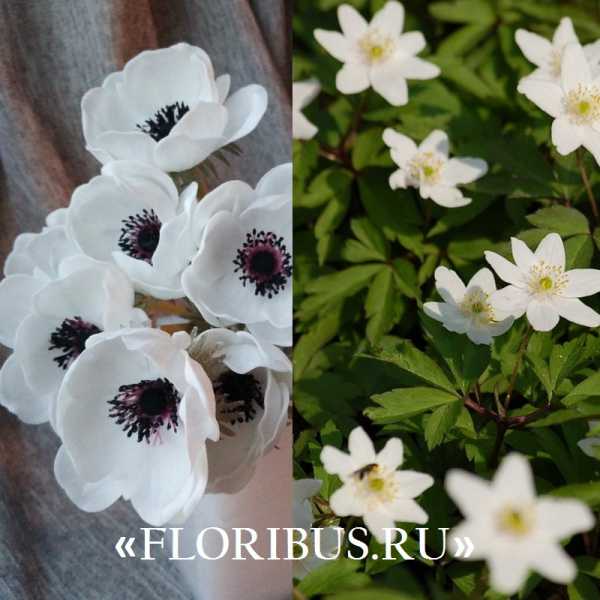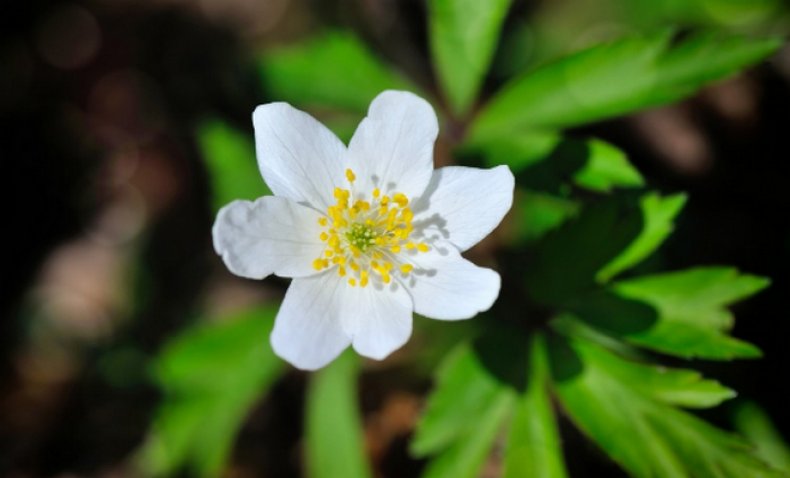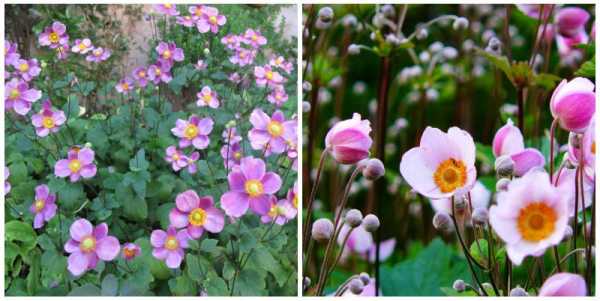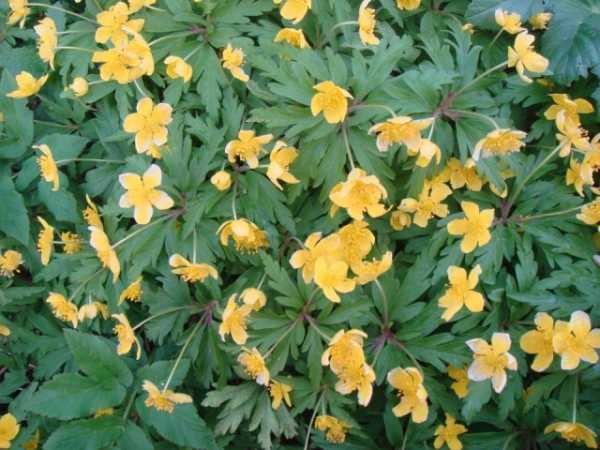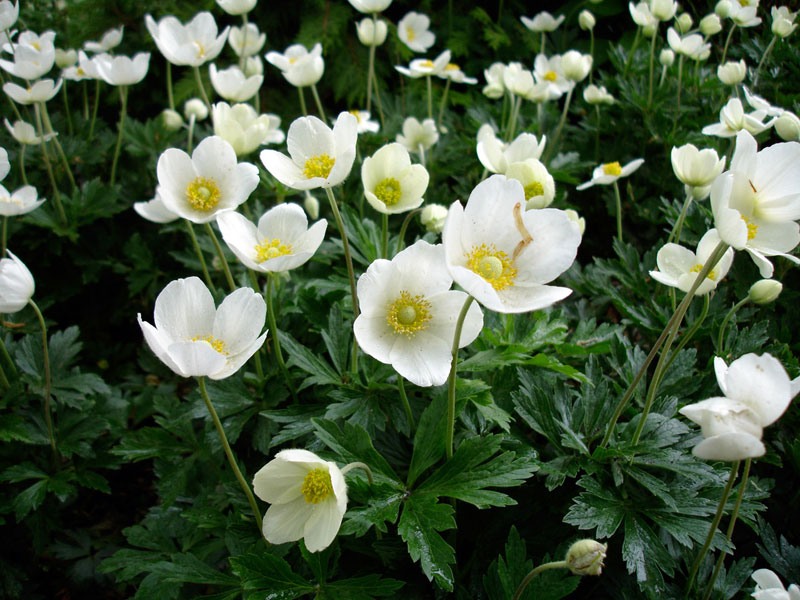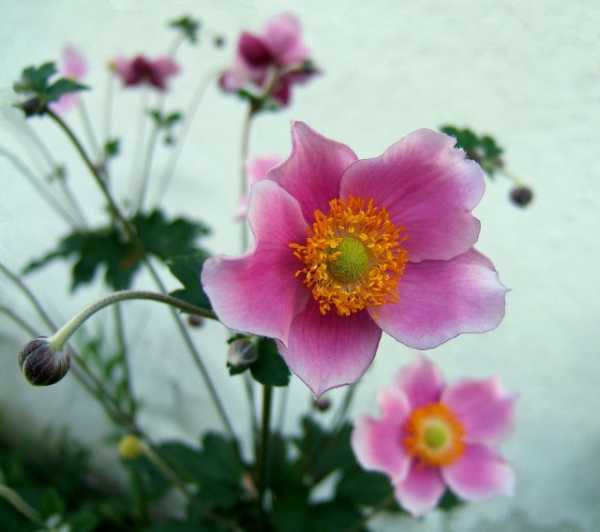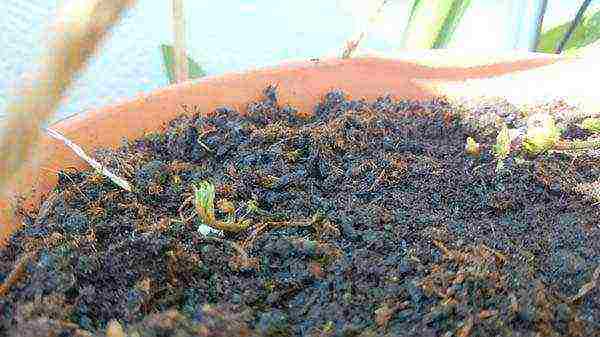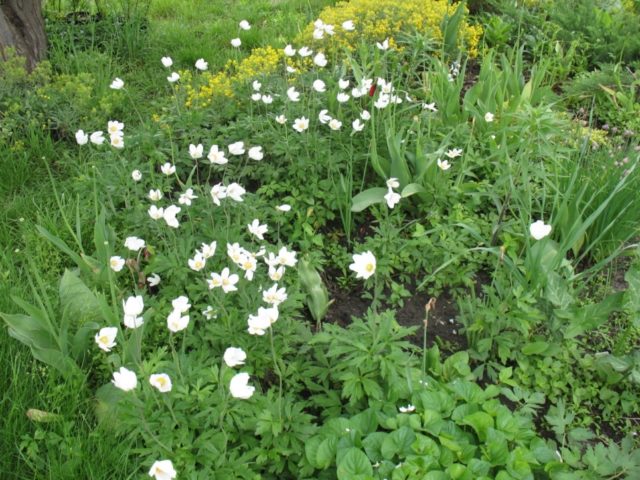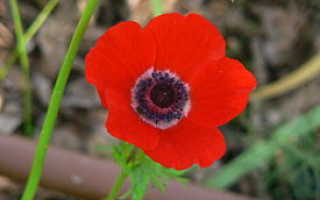Preparing for planting anemone
How to prepare the ground
Before proceeding with the direct planting of the anemones, you should find the most suitable site, and also prepare the ground. A suitable area should be spacious, in partial shade and protected from drafts. A strongly growing rhizome is very fragile, even contact can harm them. In addition, excessive heat, as well as a draft, can harm these flowers. The soil should be loose, nutritious and well-drained. The best option is deciduous soil or loam with peat. To make the soil loose, ordinary sand should be poured into it. If the soil is acidic, then this can be corrected by adding wood ash or dolomite flour.
How to prepare seeds
When growing anemones from seeds, it must be remembered that they have an extremely low germination rate. About ¼ of the seeds will be able to germinate, while they must be freshly harvested. To increase the percentage of germination of seeds, they must be stratified, they are placed in a cold place for 4–8 weeks. To do this, combine the seeds with peat or coarse sand (1: 3), the mixture must be abundantly moistened. Then it is sprayed with water every day to keep it moist all the time. After the seeds are swollen, they must be combined with a small amount of the substrate, everything is well mixed and abundantly sprayed with water. Then the seeds are harvested in a well-ventilated room, where it should not be warmer than 5 degrees. A few days after the appearance of the sprouts, the bowl with the seeds must be transferred to the yard, where it is buried in the snow or in the soil, the surface is sprinkled with straw or sawdust. At the very beginning of spring, transplant the seeds into boxes so that they germinate. If there is no desire to bother much with the cultivation of anemones, then in the autumn, sow the seeds in containers filled with loose soil. Then the boxes should be buried in the yard, while on top they are covered with cut branches. In winter, they will undergo natural stratification. In springtime, the seeds should be removed from the soil and planted.
Preparing anemone tubers
Before planting anemone tubers, they should be awakened from sleep. To do this, they are immersed in lukewarm water for several hours to swell. Then they are planted in pots filled with a moistened substrate consisting of sand and peat, they need to be buried only 50 mm. The potted substrate must be systematically moistened with moderate moisture. Also, before planting, the tubers can be "soaked", for this they are wrapped with a cloth, which is abundantly moistened with an epin solution and put in a polyethylene bag, where they must stay for 6 hours. The tubers prepared in this way can be immediately planted in open soil.
Anemones (anemone) - planting tubers
Landing rules
Anemone is great for growing those gardeners who prefer to decorate their site in a natural style. It can be planted in open field under deciduous trees and shrubs, giving the opportunity to grow
If you choose a place for this flower among the lawn grass or on the lawn, then it is important to take into account the fact that the mowing of green spaces can be performed only after the leaves die off. Otherwise, you can weaken the rhizome of the plant, which in the future will lead to its death.
It is recommended to plant a flower to a depth of no more than 10 cm, it is advisable to do this at the end of August, when the ground part of the perennial has died out.Due to the fact that the oak anemone is not afraid of cold weather, it can be planted in areas with open ground. In this case, shelters are not required for wintering. You need to start planting a plant with the preparation of seeds, purchasing high-quality seed in specialized stores (this will ensure a high percentage of seedlings).
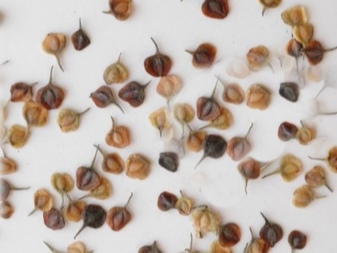
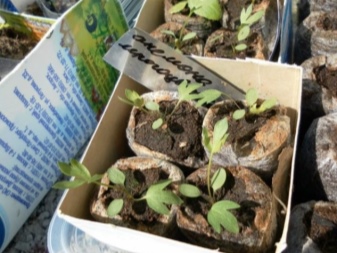
Then you need to choose the right place for sowing. If it is performed in the spring, then it is advisable to give preference to areas well-lit by the sun, while in the summer it is best to choose shaded areas, along the edges of small bushes or under the canopy of young trees. Anemone loves fertile and loose soil, with moderate moisture, excluding stagnant water. The flower also grows well in areas where the soil is with high acidity, since in the wild it can often be found in swampy areas.
At the same time, some plant varieties are more demanding to grow and they need to be sown only in soil with a neutral reaction.
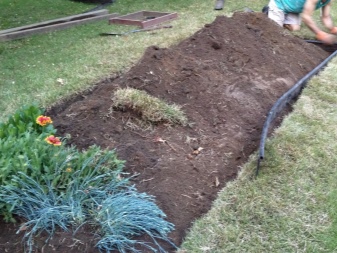

When decorating a garden bed, it is necessary to select perennial neighbors such as early primroses, liverwort, variegated primroses and Pushkinia. In this combination, plants will help create an unusual landscape design.
As for the planting process itself, it is performed as follows.
- First, you should dig a small hole with a diameter of up to 30 cm and a depth of no more than 15 cm. Then pour a mixture of wood ash and humus on its bottom.
- Next, you need to carefully lay the rhizome of the plant, cover it with fertile soil and water.
- Planting ends with mulching of the trunk circle. This will help to keep moisture in the soil in the future. If the disembarkation occurs in the fall, then the anemone is additionally covered with spruce branches.
The choice of planting material for planting tuberous anemones
Planting and care, even if carried out according to all the rules, does not always ensure the cultivation of healthy and lush-flowering plants.
It is important to buy quality planting material here. This can be done in a specialized flower shop at the end of winter.
Usually tubers are sold in branded packaging with planting and storage recommendations. Such planting material has already been treated with fungicides so that in the future the plants will not be attacked by pests and diseases.
It is best to buy tubers from a trusted manufacturer in intact packaging, carefully considering the appearance of the planting material.
Tubers of anemones are usually irregular in shape and small in size: 1-3 cm. In appearance, they look like dried flattened lumps with an uneven surface, tubercles and growths. The color of the tubers varies from brown to dark earthy, depending on the variety.
Healthy specimens are uniform in color, without black spots and mold. They are solid to the touch, without emptiness inside.
You also need to remember that purchased planting material has a low germination rate: often only one of five tubers germinates.
Plant care
Like any plant, the anemone needs to be watered, fed, loosened the soil, saved from weeds, pests and diseases. When fertilizing during planting, the next fertilization is only necessary during flowering. For this, formulations with phosphorus and potassium are used. Substances are dissolved in water and a liquid solution is obtained, which is easily absorbed by the soil and absorbed by the roots of the plant.
Do not forget about watering
This is especially important in dry weather. Excess moisture is unacceptable for anemone
The need for watering is determined by the condition of the soil; the drying of the top layer requires the introduction of water.
Anemone is a large plant, therefore weeds are dangerous to it only at the beginning of growth, then only large specimens are removed. It is useful to mulch the soil with peat, dry grass or hay, rotted sawdust. This will help retain moisture and inhibit weed growth. Mulch will protect plantings in winter.
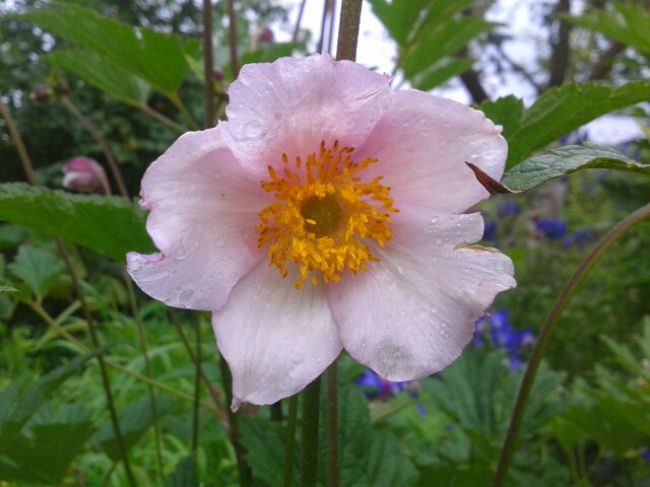
Description of the anemone Dubravnaya
The anemone or anemone (Anemonenemorosa) is a perennial plant of the Buttercup family. It has a creeping and very branched rhizome, thanks to which it retains the ability to grow rapidly and form whole carpets of white flowers.
Translated from Latin, the name of the flower means "daughter of the winds", as evidenced by its Russian name. As soon as the wind blows slightly, the flowers begin to perform an amazing and intricate dance. And this happens due to the fact that the flowers do not have sepals. Therefore, the petals are so vulnerable to any vibrations in the air.
The second name of the flower tells about its favorite habitat in nature. Indeed, most often the anemone lives in deciduous and mixed forests, on the edges or in the shrub undergrowth and blooms immediately after the snow melts. Therefore, the people often call this flower a snowdrop.
Comment!
If suddenly an anemone flower was found in a spruce forest, then, most likely, oaks once grew on this place, but later they were ousted from their place by spruces.
The oak anemone is an ephemeroid. This means that after flowering and ripening of seeds, the entire aerial part of the plant dies off. Only rhizomes remain in the ground. This happens around June or July, depending on the climatic conditions of the region. Seeds spread in large numbers around the plants, ants especially like to carry them, and over decent distances. Even though the percentage of germination of anemone seeds is not too high, in spring many new young plants sprout around the bushes and in the distance. In the first year, they only have a small stalk with a leaf. And only in the second year one can observe the appearance of a full-fledged leaf from under the ground.
The oak anemone belongs to herbaceous plants for open ground, reaches a height of no more than 15-20 cm. The leaves, three times dissected with a rich green hue, distinguish the anemone among other spring plants. Plants form bright green curtains, from which long peduncles with snow-white flowers fluttering in the wind extend one by one. Their diameter can vary from 4 to 6 cm.On the outside, the petals of the oak tree anemones have a barely noticeable purple hue, which is clearly visible in the photo.
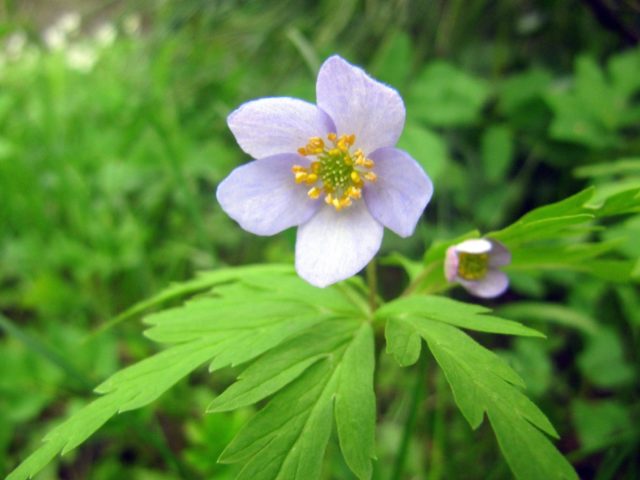
The flowers of the oak tree anemone react to cloudy and rainy weather - they close and wilt. At the same time, when the sun peeps out, they fully open their petals to meet it. Flowering is average in duration - about a month. From about mid-April to mid-May. Each individual flower can live from 6 to 15 days.
Like other representatives of the buttercup family, the oak anemone is a poisonous plant. It contains a substance (protoanemonin) that irritates mucous membranes and human skin. A particularly high concentration of this substance is found in the rhizomes. Therefore, people prone to allergic reactions need to be careful when dealing with this plant, especially when planting or transplanting.
Anemone is a long-liver, especially in comparison with other herbaceous plants. One bush can live up to 50-60 years. But it blooms in natural conditions only for 10-12 years of life. However, varietal cultivated forms of anemone begin to bloom much earlier - already 2-3 years after sowing.
Tuber preparation
If you decide to plant anemone flowers on your site using tubers, then you first need to bring the plants out of dormancy. Care and planting of anemones flowers (there is a photo in the section) is carried out in special containers. To do this, first pour a little water into the pot, then put the tubers there for several hours to swell. As soon as the first signs of an increase in planting material appear in size, it is necessary to pour water from the pots, place a sand-peat mixture in them and plant tubers there.Depth them no more than 5 centimeters from the surface. When the operation is completed, all that remains is to keep the substrate moist.

There is also another way to prepare anemone tubers for planting:
- We take some fabric and moisten it in the Epin solution, after which we put the roots of the anemone in it.
- After that, we wrap the tubers in a plastic bag and leave them in this state for five to six hours.
- As soon as the specified time has passed, it is allowed to plant the plant in open ground or in pots.
If you properly prepare the material for planting, then over time you will grow large and beautiful flowers that will have excellent decorative characteristics and a bewitching aroma.
How to keep a bouquet of these flowers?
Oak anemone has a mild and almost imperceptible aroma. She smells like wood and honey. The notes of the scent are not only very pleasant, the aromatic substances released by the plant into the air of the room have a positive effect on the nervous system, promote the integrity of sleep and relieve headaches.
However, if flowers do not grow on their own plot or if you want to take a bouquet to a city apartment, many face difficulties. The anemone crumbles literally in a few meters. It is easy to avoid this - the bouquet should be carried with flowers from top to bottom, not waving it, not walking under the scorching sun and using a kind of "protective packaging" from other plants.
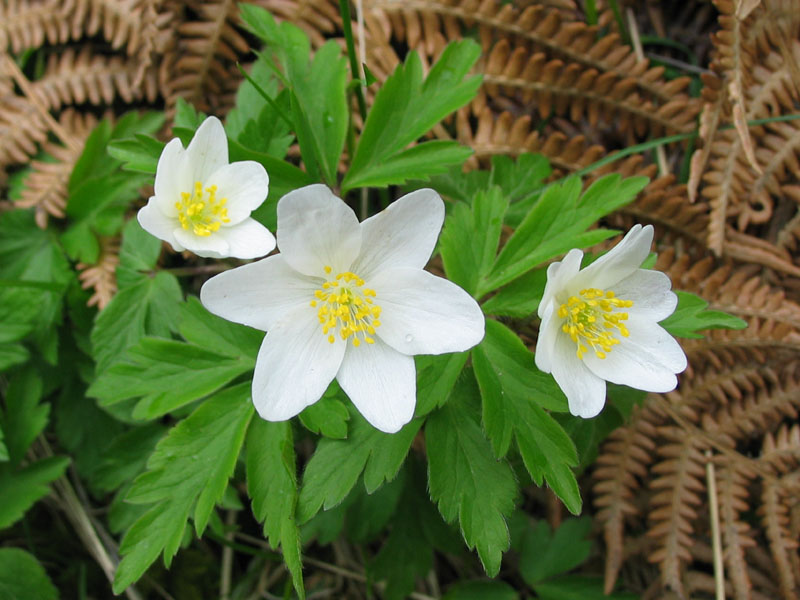
This means that an armful of anemone can be surrounded by fern leaves, chamomiles, clover, yarrow or other herbs. When picking flowers on your own plot, or a purposeful walk into the forest for a bouquet, you need to use paper, that is, wrap the flowers in newspaper.
LANDING
All types of Anemone grow well in warm sunny areas, but they also tolerate partial shade. In addition, perennials prefer air and moisture permeable soil. Before planting in open ground, you should first select a place where the plant will grow. It should be borne in mind that Anemones do not tolerate strong winds and require a lot of space. The roots of the flower should not come into contact with other plants, as they tend to grow rapidly
Then it is important to prepare the soil - it should be moderately moist, as fertile as possible and loose. To do this, you need to make good drainage and add compost, and to make the soil structure loose, add ordinary sand to it.
If the soil is highly acidic, dolomite flour or wood ash will help eliminate this negative factor.
Soil: all anemones, except for forest anemone, need for normal growth in loose, fertile soils. Moreover, the Apennine, Caucasian, crown anemones prefer alkaline soils, and the rest grow well on weakly acidic and neutral soils (pH 5-8). The forest anemone is one of the few plants that grows normally and blooms on poor sandy soils. But it also blooms more abundantly and forms larger flowers on loose, fertile soils. Root-sprouting anemones - forked, Canadian, forest - are more demanding than other anemones to the structure of the soil. They prefer light, sandy or peaty soils, but without stagnant moisture. To grow anemone with a tuberous rhizome, the soil is limed so that its acidity (pH) is about 7-8. For this purpose, you can also use wood ash, which is applied both before planting tubers and during the process of growing plants. In this case, the soil is sprinkled with ash and the soil is slightly loosened. Anemone hybrid prefers loose soils, sandy, but richer. This species needs additional feeding, reacts well to the introduction of organic fertilizers: rotted manure, compost.
Popular species and varieties
The varietal variety makes anemones an extremely popular ornamental plant among gardeners.If desired, by planting flowers with different flowering periods, you can admire the colorful flower beds throughout the season.
Anemone tender
Anemone tender - these are compact bushes 10 cm high with white, blue or pink flowers. Flowers 2–4 cm in diameter. It blooms in May, and in June the growing season ends, and its leaves dry up. Flowering time - no more than 3 weeks. Anemone tender is resistant to low temperatures, is not afraid of pests and is unpretentious in care. Prefers to grow in slightly shaded areas.
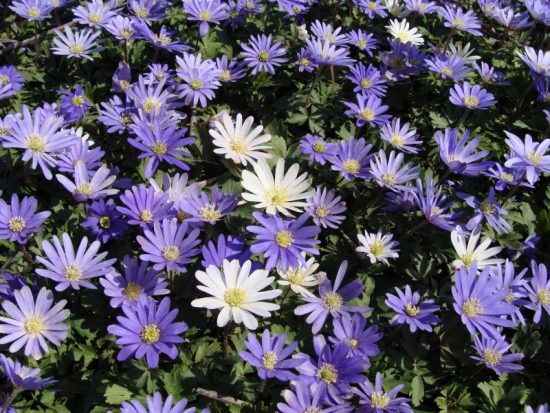
The tender aanemone variety "Blue Shades" is quite frost-resistant, practically not affected by any diseases and is very unpretentious
Crowned anemone
The crown anemone is thermophilic and contentedly capricious. A flower native to the Mediterranean grows up to 30 cm. The color of large (up to 8 cm) flowers is red, pink, lilac and white. Hybrid varieties can be terry with a border or blotches. The species is not frost-resistant, but the crown anemone blooms in spring and autumn, although the autumn flowering is less expressive. Requires good light and alkaline soil. Crowned anemone is the most popular species for cultivated plantings. It has many varieties.
Photo gallery: popular varieties of crown anemones
Japanese anemone
The Japanese anemone is an autumn species. Flowering begins in early autumn and continues until frost. Grows in large bushes up to 1.5 meters high. Flowers of some varieties can be semi-double and double. The shades are very diverse - from delicate light to dark saturated. The Japanese anemone does not tolerate frost well, it needs to be covered for the winter. Loves sunny places.
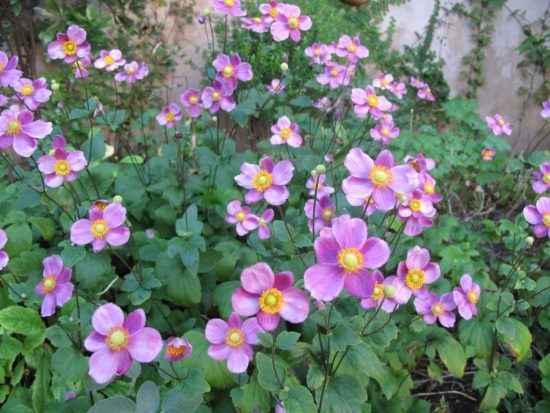
Japanese anemone does not immediately attract attention, but it is difficult to take your eyes off its graceful flowers
Forest anemone
Forest anemone is the most widespread species in Russia. Her home is a shady forest, forest edges and even rocky slopes. It grows equally well in fertile and poor soils. The forest anemone blooms early and blooms for only about a month. The stem grows only up to 20 cm, delicate white flowers with a yellow center are small - up to 3 cm.

Forest anemone is easy to care for and is suitable for growing in the middle lane
Hybrid anemone
Hybrid anemones belong to the autumn species, bloom in August - September and bloom for up to 40 days. Strong stems do not need support, although their height can reach 1 m. Large (5–8 cm) flowers are collected in umbellate inflorescences, there are double varieties. Shades - delicate pink, white, carmine, red. Abundant flowering is provided by fertile loose soil.
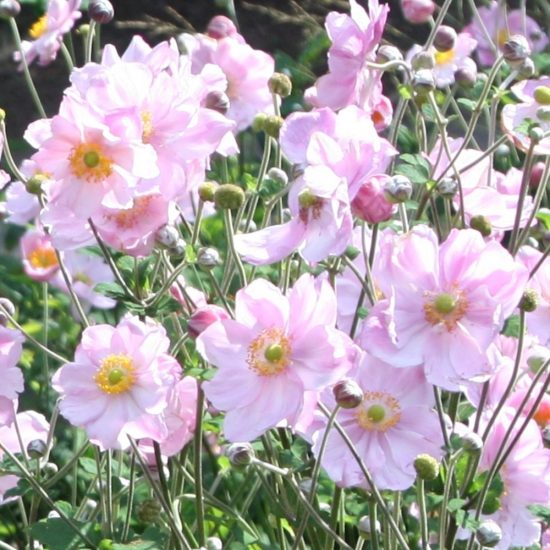
"Queen Charlotte" grows up to 60-90 cm, the flowers are of medium size, the flowering period is from mid-summer to the first frost
Outdoor cultivation and care
Several varieties of anemones are known. All of them can be divided into two groups - rhizome and tuberous. To raise the first group, special care is not required, and the second will have to tinker with so that they do not die.
What anemones look like
There are some conditions that must be observed when growing and caring for anemones:
- when it is very hot and dry, they must be watered abundantly;
- in the autumn period, complex mineral fertilizers are applied, and during the flowering period - organic;
- for the winter, in order to prevent freezing, the flowers are covered with fallen leaves;
- for the winter, the plant is propagated by seeds, and in the spring - by the vegetative method.
Anemone: planting in open ground
Before planting anemones, you need to choose a suitable place. It should be spacious, slightly shaded and protected from drafts. The rhizome of the anemones grows strongly, but at the same time it is very tender. Even a slight contact can harm them. It should also be borne in mind that they grow poorly in heat and in drafts.
The soil should be loose, nutritious. Better to prepare deciduous soil or loam with peat. For looseness, sand is poured into the ground.With increased acidity, add dolomite flour or wood ash.
Note! It is important to determine the point of growth. The tubers need to be soaked. This will allow them to swell, causing bumps to form.
This will make it easier to understand how to properly plant the anemone. The upper part of the tuber is flat, and it is necessary to plant with the pointed end down. With a non-standard shape, the tuber is placed sideways
This will allow them to swell, causing bumps to form. This will make it easier to understand how to properly plant the anemone. The upper part of the tuber is flat, and it is necessary to plant with the pointed end down. With a non-standard form, the tuber is placed sideways.
Step-by-step process on how to plant anemones:
- Dig a hole 0.15 m wide, 0.3-0.4 m in diameter.
- Wood ash and humus are poured into the pit.
- Place an onion in a pit.
- Fill the pit with soil.
- Water abundantly.
When to plant anemones: March, April, May, October, November.
The picture below shows what anemone seedlings look like.
What seedlings look like
Reproduction
You can propagate anemones by dividing the bush or seeds. In the first case, the procedure is carried out in early spring. It is necessary to have 2-3 kidneys on each section.
How to grow anemone with seeds? First of all, you need to prepare anemone seeds. It should be borne in mind that seedlings do not germinate well. From seeds that were prepared last year, a maximum of 25% will sprout. However, there are some nuances that will help increase germination. To do this, the seeds are exposed to cold for 1-2 months.
To carry out this procedure, you must:
- Add sand or peat to the seeds in a 1: 3 ratio.
- The mixture is sprayed with water and kept moist until the seeds are swollen.
- Next, the seeds are transferred to a container. The substrate is put there, mixed and moistened.
- The container is moved to a room where the air temperature should not be higher than 5 ° C. The seeds should be here until the first shoots appear.
- As soon as the sprouts hatch, the container is transferred to the street. There it is buried in snow or earth, and from above it is covered with sawdust or straw.
- With the onset of spring, the plants are planted.
Important! Seedlings should be kept away from pets. When breeding anemones from tubers, they must be properly prepared.
To do this, they are placed in warm water so that they swell, and then they are planted in pots. After emergence, the plants are planted in open ground
When breeding anemones from tubers, they must be properly prepared. To do this, they are placed in warm water so that they swell, and then they are planted in pots. After emergence, the plants are planted in open ground.
Diseases and pests
The oak anemone is highly resistant to diseases and harmful insects, but sometimes problems can occur with growing a plant in summer cottages. So, for example, due to high humidity in the soil, the anemone can be affected by slugs. In order to prevent the death of the flower, it is recommended to carry out pest control in a timely manner. In this case, containers filled with chlorinated water are placed next to the plants - they will scare away slugs.
Sometimes perennial bushes are affected by a nematode. This usually happens when planting in areas with contaminated soil. This disease is manifested by a change in the shape of the stems and leaves, after which the flower begins to fade. If such a disease manifests itself, it is recommended to immediately remove diseased plants from the site and not plant an anemone on it for several years.
For more information on varieties and care features, see below.
Anemone Dubravnaya in landscape design
Dubrovna anemone is able to serve as a decoration of the garden precisely at that period when the eye is not yet tired of the riot of flower colors and nature is just beginning to wake up.
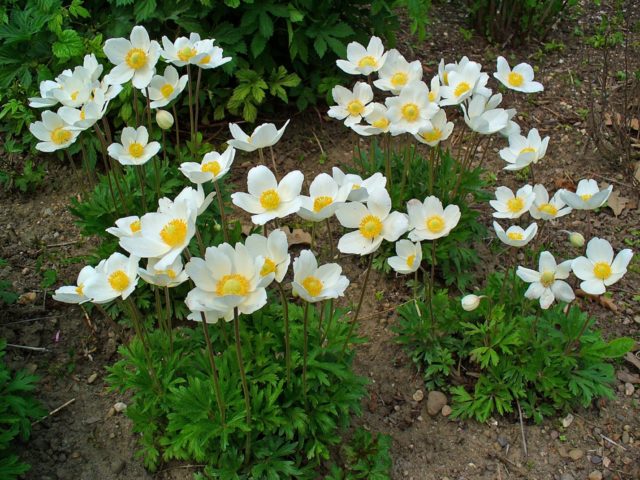
Its delicate flowers among young grass under the crown of an orchard or not too dense ornamental shrubs look very touching.
Specially bred cultivars are generally so beautiful that they attract attention by themselves. For example, the Vestal oak anemone can serve as an independent accent on a spring flower bed.
It will be impossible to pass by her, so as not to improve your mood from admiring the snow-white fluffy beauties.
The anemone will also look good on a lawn in a semi-shady place. It should only be understood that the mowing of the lawn in this case will have to be postponed until the leaves die off by themselves. Otherwise, you can damage the rhizomes.
Other spring flowering perennials are ideal as neighbors for the oak anemone: liverwort, corydalis, lungwort, primroses, white flowers, chionodox.
Planting and caring for anemone De Caen mix
In order for this perennial to quickly adapt to a new place and bloom magnificently, you need to take into account the basic requirements of the culture. This is confirmed by experienced florists, who insist that when planting and caring for the crown anemone "de Caen", one should adhere to certain rules, otherwise it is unlikely that it will be possible to achieve the desired decorative effect.
Site and soil requirements
This perennial prefers to grow in slightly shaded areas, protected from strong gusts of wind. It is preferable to choose places with a slight elevation, which will exclude stagnant moisture. Best suited for the crown anemone "De Caen" are loam and sandy loam soil with a neutral level of acidity. In this case, the soil must have good moisture and air permeability. It is allowed to plant this perennial in heavy soil, but only after preliminary application of sand and humus, which will make its structure looser.
Tuber preparation
The tubers of the plant are not distinguished by increased germination, therefore, before planting, they must be soaked in a solution of "Epin" or "Zircon", which activates the growth processes. In the absence of these preparations, ordinary warm water can be used. You need to immerse the tubers in it and leave until it swells. After that, they should be dropped off at a permanent place.
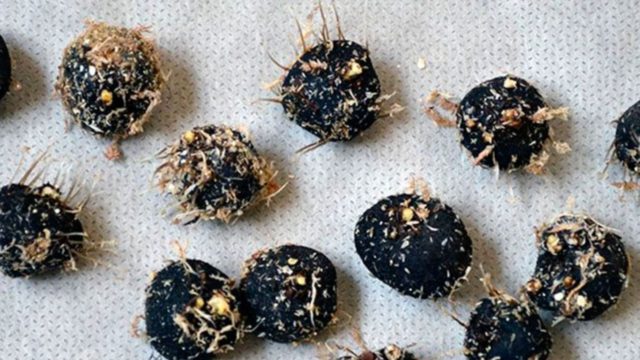 Tubers become slightly sluggish during long-term storage
Tubers become slightly sluggish during long-term storage
How to plant De Caen anemone flowers
When planting this perennial, it is necessary to correctly determine the growth point. After swelling, the recovery buds on the tubers should become pronounced, which will simplify this task. The second guideline should be that the upper part always remains flat, therefore, the crown anemone "De Caen" should be planted with its pointed edge down.
The holes must be prepared at a distance of 10 cm. Their depth should be about 15 cm. Humus and wood ash must be added to each planting hole, thoroughly mixing them with the ground. At the end of the procedure, the crown anemone "De Caen" should be watered abundantly.
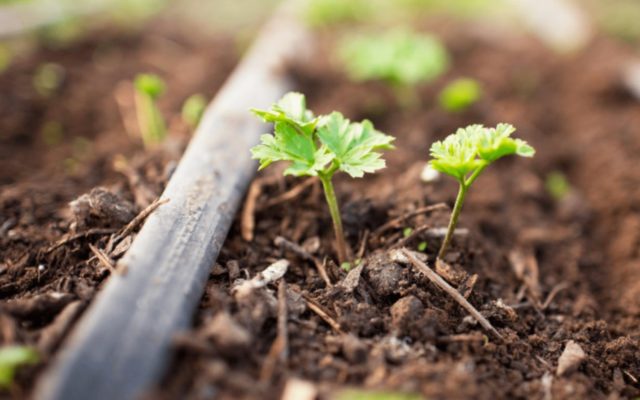 The first shoots appear 2-3 weeks after planting.
The first shoots appear 2-3 weeks after planting.
Follow-up care
Growing and caring for the crown anemone "De Caen" does not require complex actions. Watering the plant should be carried out only in the absence of rain for a long time. For this, settled water should be used. Frequency of moisturizing 1-2 times a week. After each watering, you should loosen the soil at the base of the bush, which will improve air access to the roots.
In case of prolonged drought, the perennial root circle should be mulched with humus or peat. This will retain moisture and prevent crusting on the surface.
You need to feed the crown anemone "De Caen" twice a season during an active growing season. To do this, you can use organic matter or nitroammophoska at the rate of 30 g per 10 liters of water. Also, during the flowering period near the bushes, you need to scatter wood ash with further embedding in the top layer of the soil.
When to dig and how to store
In the central and northern regions, tubers of the crown anemone "De Caen" should be stored in a cool dry place in winter. To do this, they should be dug up in October, when the aboveground part of the plant begins to wither.Then dry and immerse in sand or peat. In this form, they should be until spring.

